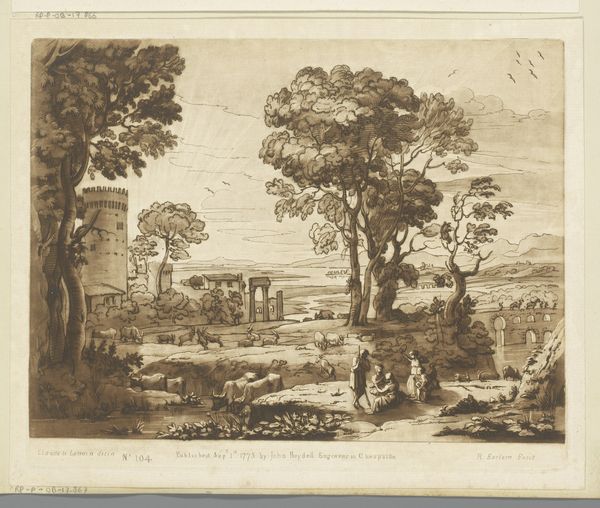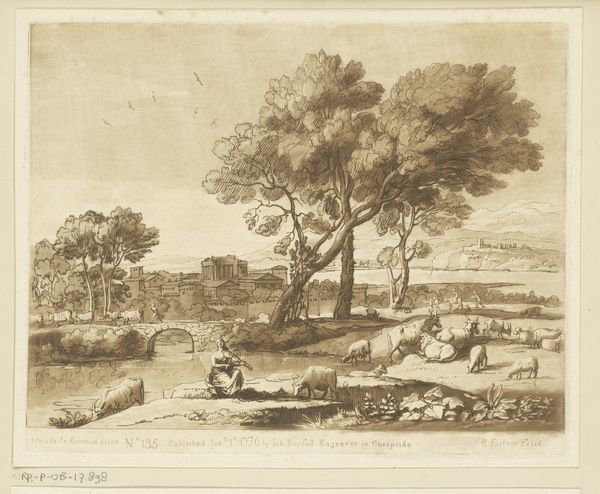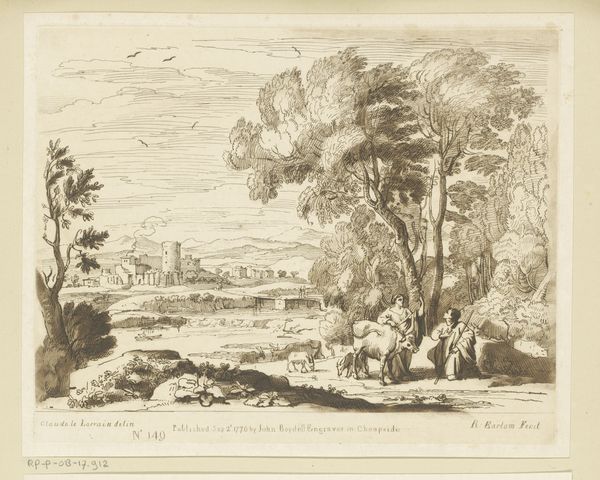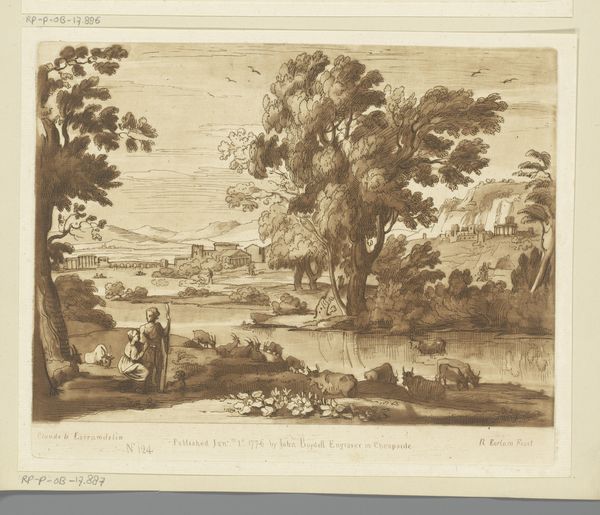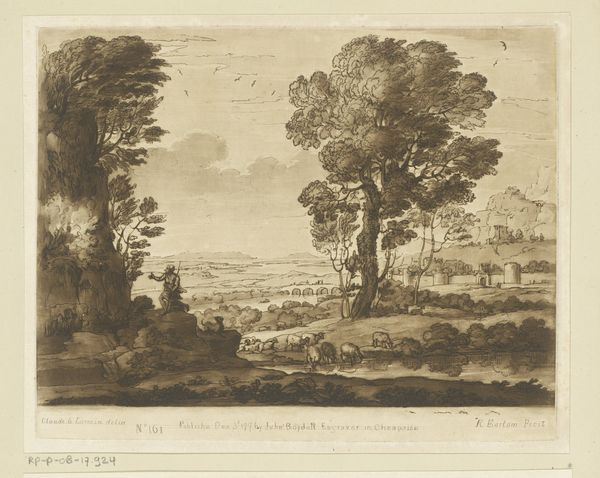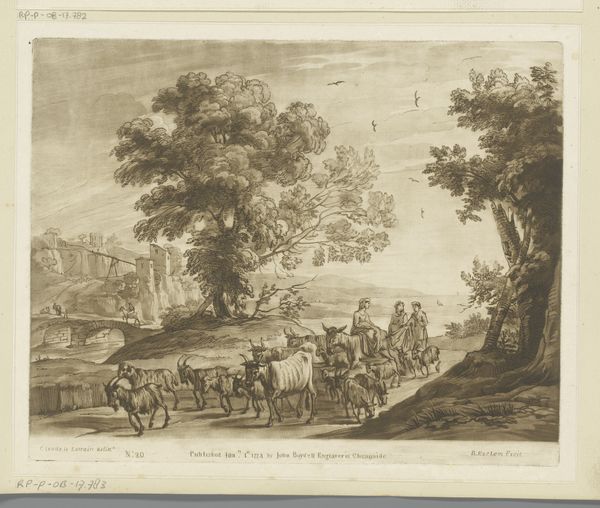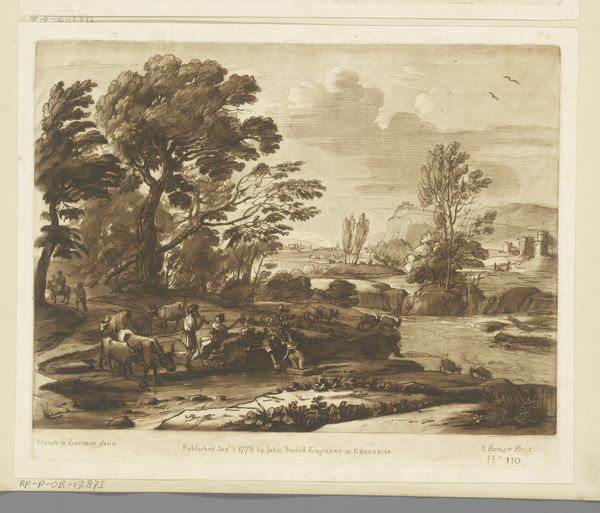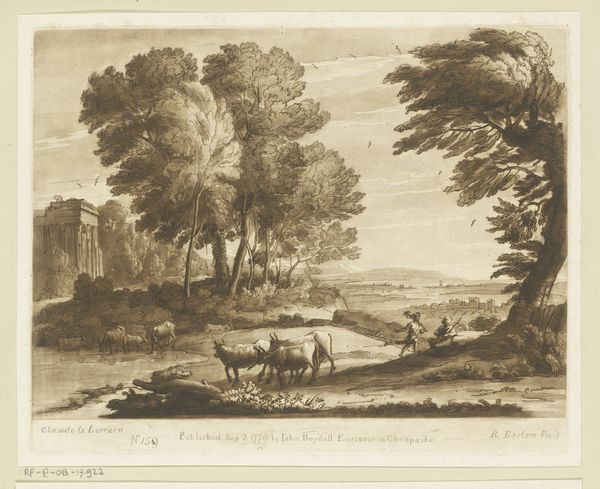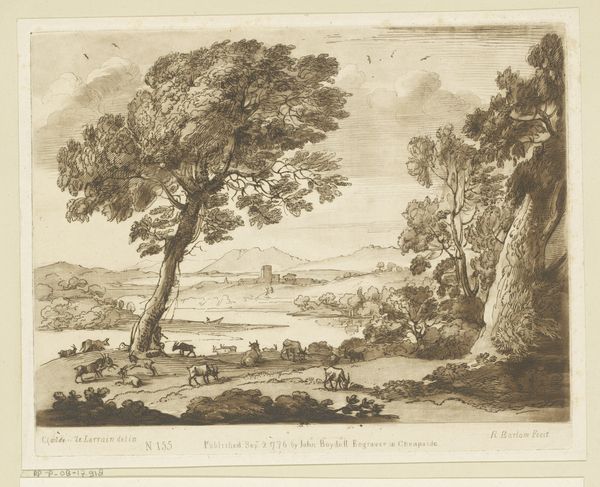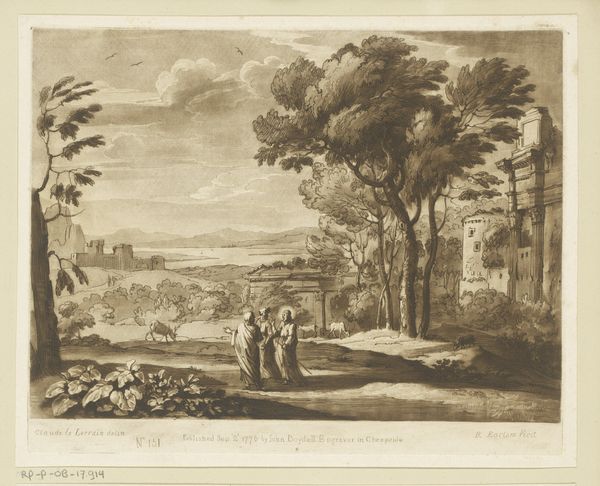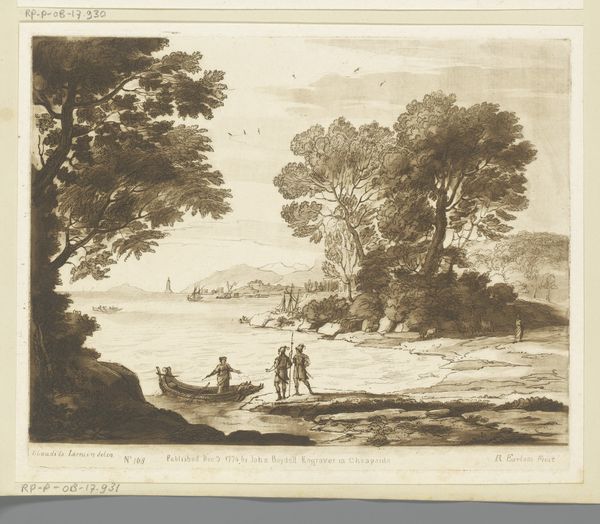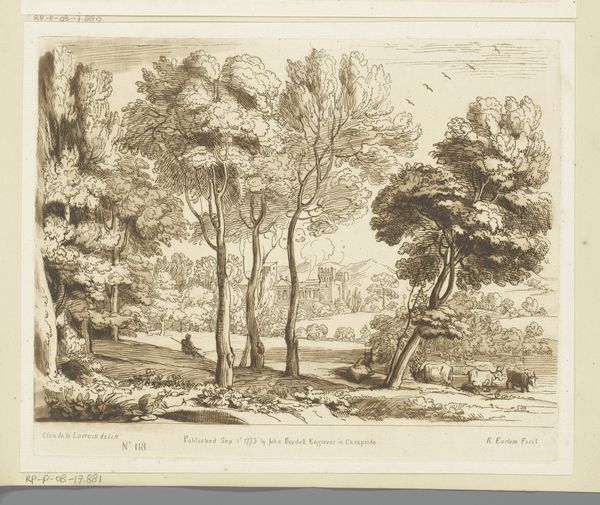
Dimensions: height 207 mm, width 258 mm
Copyright: Rijks Museum: Open Domain
Curator: Before us is "Landscape with Jacob, Laban, Leah and Rachel," an etching and engraving made around 1776 by Richard Earlom, after Claude Lorrain. Editor: My first impression is one of staged harmony. The landscape is rendered meticulously, but with a notable separation between foreground and background. Curator: The artist’s control over line and tone is striking. Look how the varying densities of hatching create a sense of depth and atmospheric perspective, leading the eye back across the river and into the distance. The classical elements of the landscape, the trees, the bridge... everything contributes to this calculated harmony. Editor: I see a romanticized vision, which idealizes rural life, conveniently omitting any hardships endured by those who lived off this land. These are Biblical figures, but placed in a rather arcadian European setting. We must question for whom this visual narrative was originally created, and what message it was intended to convey. Consider its viewers –likely affluent Europeans who benefited from exploiting lands outside of Europe. Curator: You raise an interesting point. We can read this image as part of the artistic vogue of the time. However, it’s essential to admire Earlom's translation of Claude Lorrain’s original painting, the way the light interacts with the etched lines, and how the figures are integrated into the pastoral setting. It is a study in pictorial construction, following formal rules of composition. Editor: Agreed, technically the print shows skill in manipulating light through shading and hatching, achieving remarkable tonal range. Nevertheless, one must ask why Biblical stories are so often visualized through a white, European lens, furthering specific cultural interpretations as universal. The romanticized view of work ignores any labor or exploitation. Curator: Indeed, these prints also democratized art, bringing the grand visions of artists like Claude to a wider audience through affordable reproductions. It broadened the reach of aesthetic ideals and accessible visual narratives, so that European households could consume it at will. Editor: That said, “democratization” is misleading. It widened art appreciation to certain audiences but not to others. Understanding these power structures is integral to decoding the image. Curator: Food for thought. Earlom's landscapes present an inviting surface, yet harbor complexities worth further unpacking. Editor: A picture, perhaps, of what is seen and unseen, calling us to constantly question representation and cultural perspective.
Comments
No comments
Be the first to comment and join the conversation on the ultimate creative platform.
